On a trip through Germany in 1971, I took a train from Frankfurt to Munich. The train was half-empty, and I looked around for a while before finding a friendly face. He was a factory worker in Germany but was originally from Italy. I don’t think we had talked more than three minutes before we were on the subject of food. He asked me if I had tasted pasta with broccoletti di rape. I assured him that I had, and he clasped his hands, rolled his eyes, and exclaimed in his beautiful dialect, “It’s so good it hurts!” What he called broccoletti di rape, or rape (pronounced rah-PAY) for short, is better known in this country as broccoli rabe. However you pronounce it or spell it, this marvelous cool-weather vegetable is a joy to grow and to cook with. Learn how to grow your own broccoli rabe from seed, and take advantage of this versatile green.
Broccoli Rabe Basics
- Amend beds with compost and manure.
- Plant in late summer and early winter in cool zones, or late fall in warmer spots.
- Broadcast the seed over the bed, and water the seed in.
- Harvest as soon as the buds appear (the plants will be between 1 and 2 feet tall).
Sow broccoli rabe seeds in late summer and early winter
One of the best things about broccoli rabe is how easy it is to grow. Once sown, it requires practically no care at all. Unseasonably warm weather may cause it to bolt too quickly, and deer can be a problem. The only other trouble used to be the unavailability of seeds. Decades ago, I had to get mine from Italy. Today, seeds of broccoli rabe are readily available from American seed companies.
Broccoli rabe has a penchant for cool, wet weather. Here in the Northeast, I sow two plantings. I sow my first planting in late August or early September and harvest it from late October through November. I sow my second planting after a hard freeze; these seeds hunker down for the winter, then produce an early-spring crop. I also allow some of the plants from the first planting to go to seed in late fall so that the seeds will germinate in spring.
Following the advice of my father and grandfather, I broadcast the seeds thinly and evenly, as I would lettuce, aiming to cover the bed so that the plants are about 3 inches apart. Because it’s impossible to space the seeds precisely and because some of them won’t germinate, I always sow twice as much seed per given area as is recommended on the package. I don’t bother to cover the seeds with soil, but I do water the bed right after sowing so that the water pushes the seeds into the ground. If a dense patch crops up, I thin it and eat the tender stalks and leaves.
Know the best soil conditions for broccoli rabe
I plant a 15-foot-square bed of rabe—but then, I’m quite fond of it. A bed 2 feet wide and 12 feet long will yield plenty for the average gardener. Broccoli rabe likes cool, wet, fertile soil. Last year, I sowed my first planting after a crop of fava beans. I didn’t make a fuss about soil preparation. I yanked out the fava beans, broke up the worst clods with a garden fork, and left the soil rough. I find that rough soil does a better job of holding moisture than does finely tilled and smoothly raked soil.
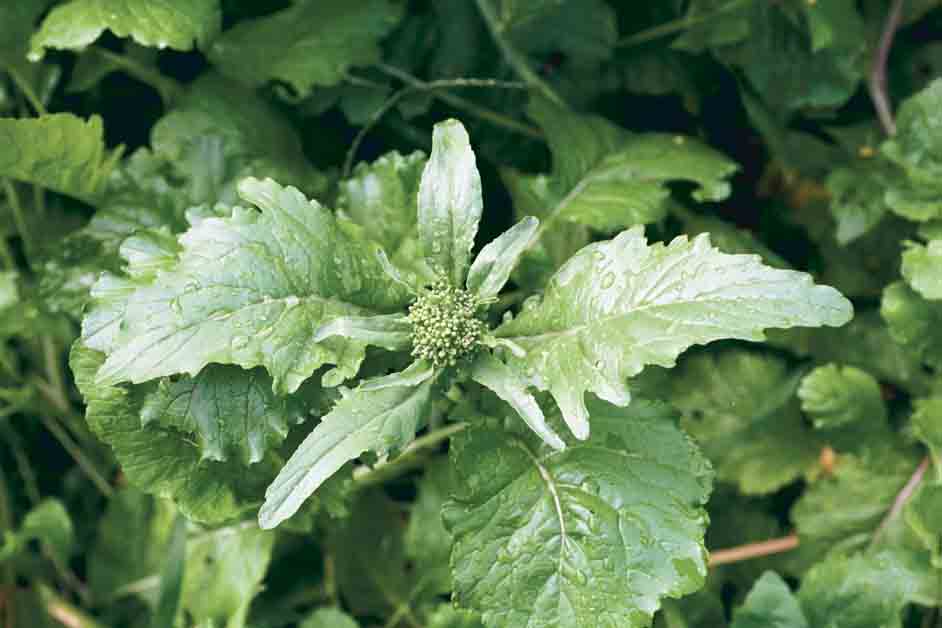
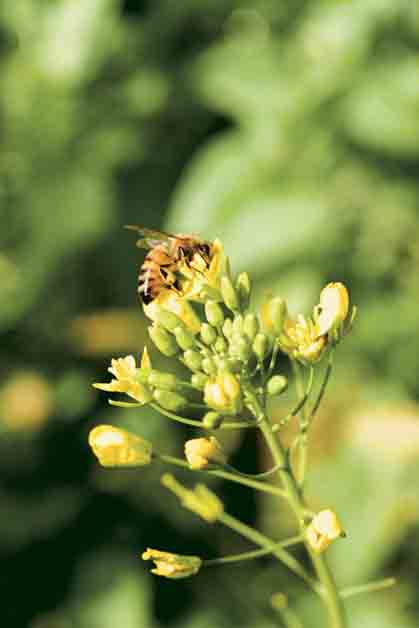
Harvest broccoli rabe at the first sight of buds
I harvest broccoli rabe as soon as the buds appear (plants will be between 1 and 2 feet tall). I check the bed often because the buds burst into flowers soon after they form. Using a knife, I cut the main stem several inches below the bud, taking the bud and stem, along with side shoots and leaves—all of which are tender and edible. Broccoli rabe produces tender second cuttings, so I leave behind the rest of the main stem because the plant will send up another shoot. This second growth produces smaller, more delicate leaves and buds, called cima di rape.
Many Italians favor cima di rape over the first cutting, but I prefer the larger buds. In any case, broccoletti di rape and cima di rape taste best when they’ve been nipped by a light frost. I can scarcely imagine autumn without them.
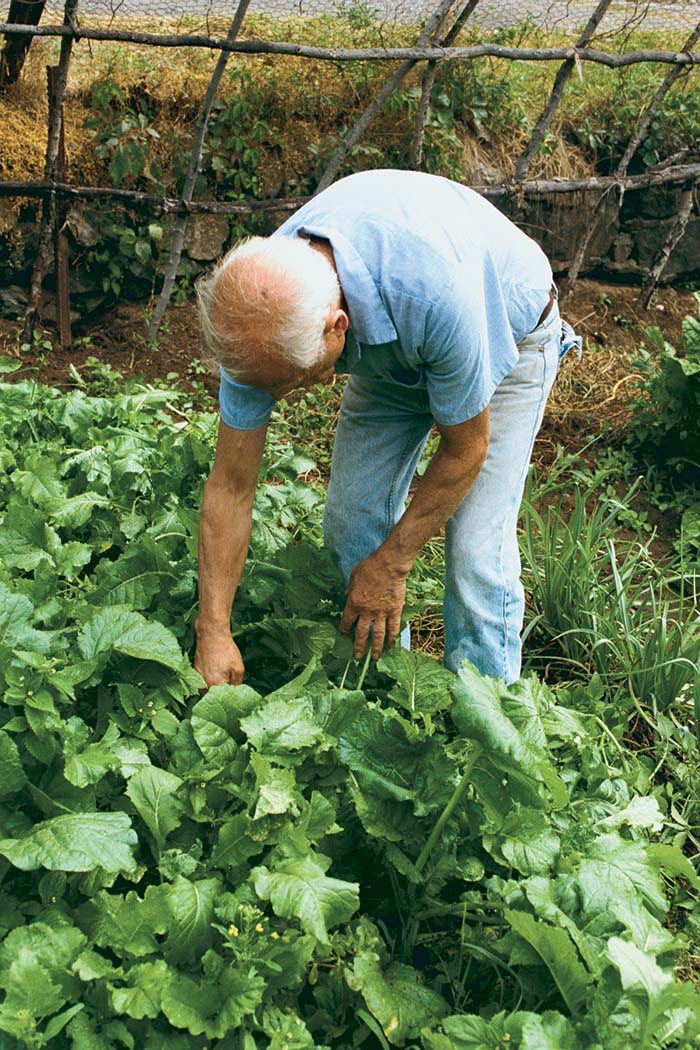
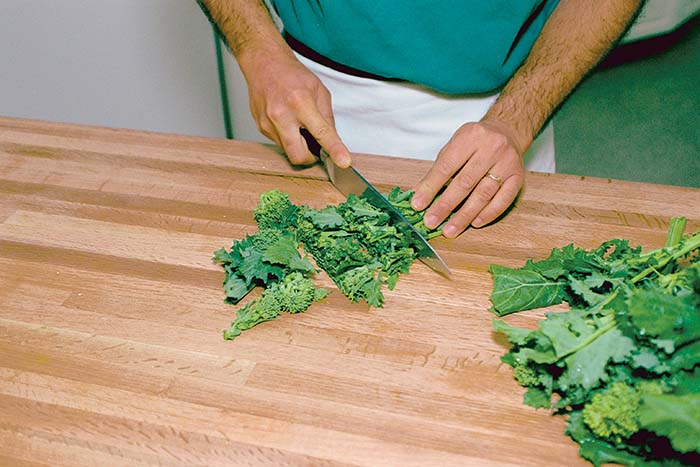
A unique member of the Brassica family
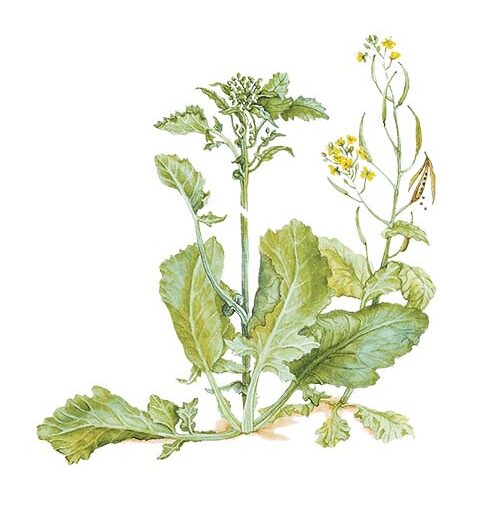 Broccoli rabe is sometimes mistaken for turnip greens—and for good reason. A member of the Brassica family, rabe is a cousin of the turnip (broccoletti is Italian for “little broccoli,” and rapa means “turnip”) grown not for its root but for its leaves, shoots, and florets.
Broccoli rabe is sometimes mistaken for turnip greens—and for good reason. A member of the Brassica family, rabe is a cousin of the turnip (broccoletti is Italian for “little broccoli,” and rapa means “turnip”) grown not for its root but for its leaves, shoots, and florets.
Rabe is one of the most popular vegetables in Italy. It is favored for its slight bitterness, which is a little like that of mustard greens with a hint of broccoli, although all comparisons fall short of capturing its unique flavor.

